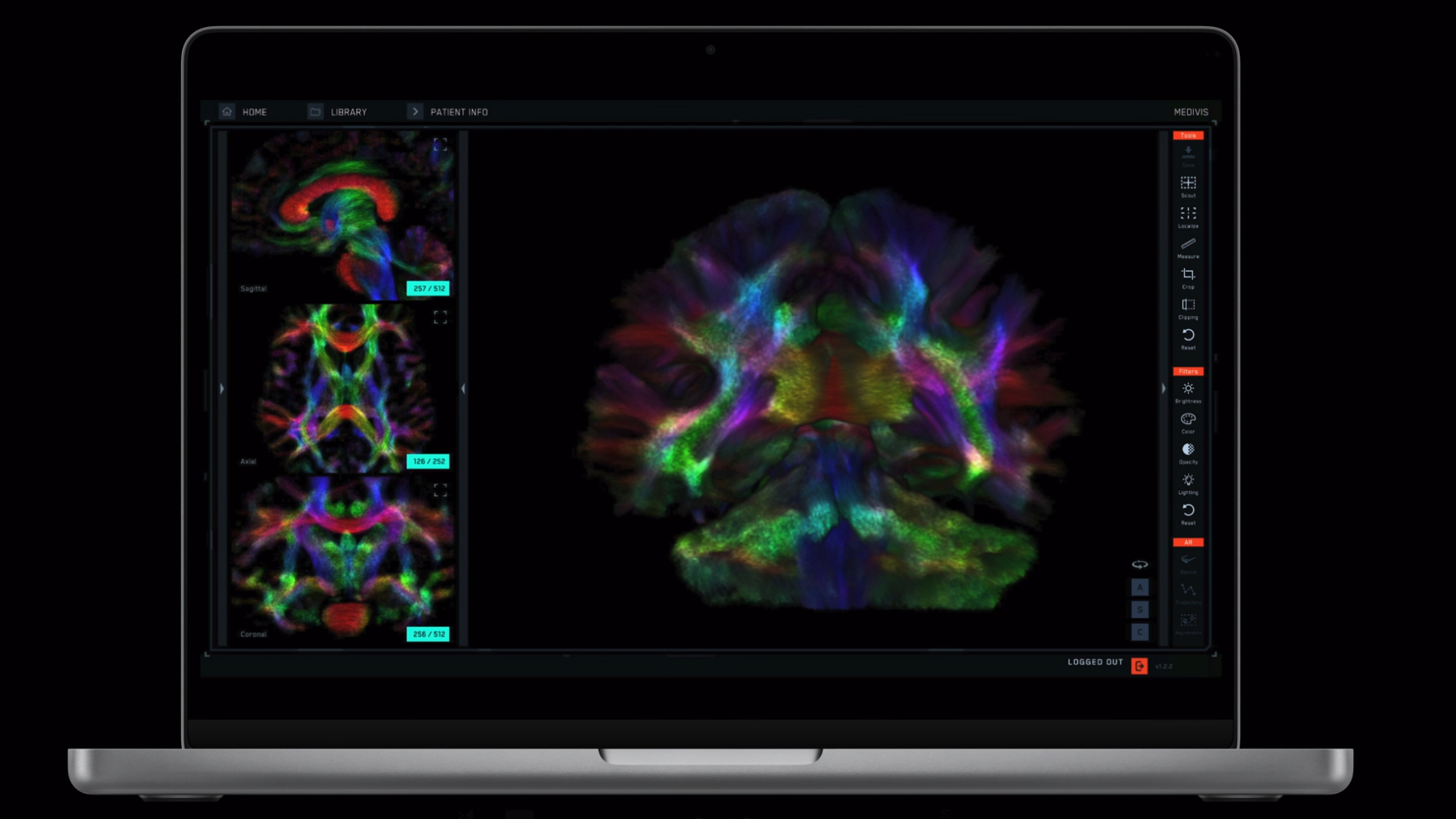Dynamic Caching and its M3 chips could be the secret to Apple's Mac gaming plans
Faster and more efficient than ever.

Apple's 'Scary Fast' event is over and it brought plenty of announcements, most of which matched with what the leaks and rumors had told us to expect. But that doesn't mean that there weren't a few surprises along the way.
Announced during that event were the new M3 family of 14- and 16-inch MacBook Pros as well as a new M3 24-inch iMac. And while that might sound like an underwhelming event that came in at a snappy 30-ish minutes, it doesn't tell the whole story.
Part of the story is that Apple ditched the 13-inch MacBook Pro from the lineup entirely, killing off the Touch Bar in the process. But that isn't even it. The more interesting thing was Apple's new silicon — the M3, M3 Pro, and M3 Max. Because all three of them once again show that Apple wants to turn the Mac into a gaming platform. Whether it can actually do it is another matter entirely, but a secret weapon might give this round of chips an edge that the previous ones can't match.
All-new silicon
The new chips are all built on TSMC's 3nm manufacturing process, as expected. That's the same process that was used to build the A17 Pro that already powers the iPhone 15 Pro and iPhone 15 Pro Max, in case you were wondering. That means that these chips are cool and sip power, but that doesn't mean that they're slouches. These new chips are fast. Faster than any Mac chips that came before them, in fact.
But apart from all the cores — and there are plenty — something more interesting caught my eye. It's called Dynamic Caching, and it has the potential to change how games and app developers use the Mac's GPU moving forward.
The Dynamic Caching aspect of the M3 family of chips was mentioned during the 'Scary Fast' event, but it wasn't until the accompanying press release dropped that it was made clear what the feature is actually capable of. It's worth noting that this feature isn't reserved for the best Macs, either — it seems to be present on the entire M3 family of chips.
And that's good because it sounds pretty impressive.
iMore offers spot-on advice and guidance from our team of experts, with decades of Apple device experience to lean on. Learn more with iMore!
More dynamism

According to Apple's press release, the GPUs in the new Macs are already faster and more efficient than those that came before them. But they go further thanks to their support for Dynamic Caching, a feature that "unlike traditional GPUs, allocates the use of local memory in hardware in real time."
What does that mean? Apple says that "with Dynamic Caching, only the exact amount of memory needed is used for each task. This is an industry first, transparent to developers, and the cornerstone of the new GPU architecture."
The upshot of all that? Apple says that Dynamic Caching dramatically increases the average utilization of a Mac's GPU which in turn means that performance is increased across the most demanding of apps. Those apps, of course, include games which means we can hopefully look forward to improved frame rates and more when these Macs are put through their paces.
There are other GPU improvements for gamers, too. Those include support for hardware-accelerated ray tracing and mesh shading, a first for any Mac silicon. All of that should hopefully make Macs sporting the M3 family of chips better gaming machines. That shouldn't be a surprise given the A17 Pro's capabilities, especially when faced with console-quality games like Resident Evil Village.
Unfortunately, none of this will matter if Apple can't get other companies to port their games to the Mac — something it's getting better at, but still has some way to go.

Oliver Haslam has written about Apple and the wider technology business for more than a decade with bylines on How-To Geek, PC Mag, iDownloadBlog, and many more. He has also been published in print for Macworld, including cover stories. At iMore, Oliver is involved in daily news coverage and, not being short of opinions, has been known to 'explain' those thoughts in more detail, too.
Having grown up using PCs and spending far too much money on graphics card and flashy RAM, Oliver switched to the Mac with a G5 iMac and hasn't looked back. Since then he's seen the growth of the smartphone world, backed by iPhone, and new product categories come and go. Current expertise includes iOS, macOS, streaming services, and pretty much anything that has a battery or plugs into a wall. Oliver also covers mobile gaming for iMore, with Apple Arcade a particular focus. He's been gaming since the Atari 2600 days and still struggles to comprehend the fact he can play console quality titles on his pocket computer.
